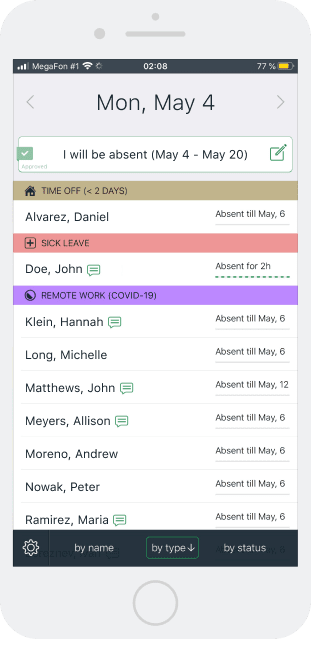Telecommuting is a flexible work arrangement in which employees don’t need to commute to a central place of work but can do their jobs from home or any other alternative place of convenience. That is why the remote way of working offers multiple advantages to both the employers and their subordinates.
If you’re a telecommuting employee, you likely enjoy a much better work-life balance than a worker who attends an office five days a week. Moreover, you save money that otherwise would be spent on traveling to the workplace. If you an owner of a web-based business, it is possible that you profit from reduced staff turnover, as well as a higher degree of job attractiveness, and economize on office lease since you don’t have any.
Remote work also has significant positive impacts on the environment and public health by decreasing the levels of greenhouse gas emissions and psychological stress caused by commute. In the present-day context of the worldwide pandemic, both the health and the economic benefits of telework are as apparent as never before since this model of working protects individuals from exposure to the virus and helps them sustain their income while the COVID emergency is still in progress.
Considering all of the above advantages of telecommuting, it isn’t surprising that it has rapidly grown in popularity throughout the last two decades. And we may validly expect the number of remote workers to increase in the near future.
However, as an unconventional approach to work, telecommuting is linked to several difficulties and risks in terms of performance management, workforce supervision, professional communication and corporate data protection. To ensure that your company functions well and your employees attain desired productivity outcomes in the remote work mode, you need to address these risks in a timely manner.
One of the best ways to do so is through the development of a telework policy, and the present guide thoroughly explores what such a policy is, what it can protect you from and what kind of benefits it may produce. On this page, you will find a sample list of policy contents, which you may use as a reference for designing your own telework agreement.
Why Do You Need a Telecommuting Policy?
By its very nature, remote work implies a substantial degree of employee isolation. Even if your team members often collaborate online and you stay in touch with them on a daily basis, it’s hard to oversee everything they do while working from home and remain constantly aware of their progress.
Of course, excessive control and micromanaging rarely lead to favorable outcomes, but you still want to rely on your employees and be confident that their wages are fairly earned. The telecommuting policy is what you need to get this type of guarantee and establish trust with your subordinates. This policy sets boundaries and acceptable behaviors and encourages employees to conduct in a way that not only contributes to the company’s well-being but also allows them to meet their own interests and needs.
Besides promoting productivity and efficient performance, the telecommuting policy serves to prevent risks of a legal character and maintain internal network safety. As you may already know, a breach in security can be very costly and cause the loss of money and stakeholder trust. The telecommuting policy will aid you in motivating remote workers to access and use organizational data responsibly and holding them accountable for compromised security. In this way, you will be protected from third-party lawsuits, as well as financial and reputational damages, much better.
Policy Contents
There is no unified prescription on how to design and manage organizational policies. Yours may be succinct and generalized or very precise and inclusive of an extended number of matters. The choice is always yours.
Below you will find an example of what the telecommuting policy can look like. Fill free to use it as a template, but be sure to customize if necessary.
Policy Brief and Purpose Statement
In the introductory section of the policy, explain why this document is created and which purposes it aims to fulfill. As an example, you can do the following:
-
Define the term “telework”;
-
Indicate in which situations your company will offer this type of work arrangement: Will you have a temporary work-from-home period, or will it be a permanent measure? Will there be any eligibility criteria for working from home in your company? In other words, which personal circumstances and professional qualities will make a team member qualified for remote work?;
-
State the reason why the policy is created (e.g., to stimulate productive performance and minimize risks to both your employees and business as a whole);
-
Briefly summarize policy contents.
Try to keep this part of the document short, yet cover all the issues that will allow your workers to understand why it would be better for them to follow the rules and sign a policy acknowledgment form.
Scope
A scope statement is meant to provide a concise description of problems addressed in the policy to give the audience a glimpse of what they’re about to read. Besides, it identifies those affected by the policy. In your case, that would be your team members and yourself as an employer and manager of the company.
Telework Agreement
This one is the core part of the policy, where you will describe general conditions for the telework agreement. Here, you should state how you will regulate and manage relevant risks and matters of performance, define behavioral expectations and list all applicable employee liabilities and rights.

Some of the matters to touch upon are as follows:
Conditions of Employment
Will your remote employees’ terms of employment – work hours, compensation, PTO accrual and so forth – remain the same as for those working from the office, or will telecommuting be associated with a totally different set of conditions? Answer this question in the present section of the policy and clearly identify any possible changes in all the essential aspects of employment if they are going take place.
Cybersecurity
When employees work remotely and access corporate data from multiple devices, the risk of information breach and threat to the company’s intellectual property increases. Thus, the telecommuting policy should address cybersecurity issues and specify:
-
The level of confidentiality and data security expected from teleworkers;
-
Rules regarding the storage and use of confidential and sensitive data;
-
Access restrictions for different groups of employees, as well as non-employees (e.g., family members and third parties that could access organizational data through a worker’s personal computer).
It is important to remember that human error is one of the primary causes of data breaches. Therefore, it would be great for you to educate your workers about risky behaviors to avoid and ways to handle sensitive information properly. After that, make a policy statement on repercussions that employees may encounter as a consequence of data breach due to negligence or malicious intent.

Professional Equipment
High-quality, properly functioning technologies are vital for productive performance. Therefore, in the policy, you should state which devices your team members must possess in order to work from home and explain whether you can provide employees with the required office equipment, be that cellphones, tablets, desktop computers or copiers.
In case you will agree to supply certain technologies to remote workers, be sure to set out the terms of hardware and software use and indicate who will be held accountable for damages occurred as a result of irresponsibility and poor compliance with safety standards.
Occupational Safety
Every employer is legally obliged to establish safe working conditions and usually held liable for injuries that employees get in the course of employment. Depending on the nature of occupation, a worker’s injury may, in certain circumstances, arise directly from their job-related activities even while they are working from home. For this reason, it’s in your best interests to ensure that the environment where a telecommuting employee works is safe. But how to do that?
For starters, ask your team members to carry out a telework safety survey and then outline the applicable safety requirements in the policy:
-
Adequate lighting, temperature and noise levels;
-
Smoke detectors in the workplace area;
-
Workstation security (including equipment stability and informational safety);
-
Evacuation plan, etc.
Emphasize personal responsibility of employees for their occupational safety during the telework period, yet consider offering assistance in the elimination of potential hazards if possible.
Communication Standards
Online communication is often characterized by an informal tone, which may be fine if equality is one of your corporate values, and if your colleagues are used to talking to each other in a casual fashion. However, this characteristic of online communication may become a problem in case you prefer maintaining a formal professional tone and normally use all text messages as legal documents.
Therefore, depending on the communication culture you would like to sustain while working remotely, develop a list of standards and requirements for team interaction in the virtual space:
-
Define the desired level of communication formality;
-
Encourage a polite manner of conversing, free of racist, sexually innuendos and other kinds of discriminatory and culturally insensitive comments;
-
Specify communication routines (e.g., daily reports, video meetings, etc.) that your teammates must perform;
-
Indicate preferable communication tools for different occasions (e.g., phone calls to discuss individual performance issues with a manager, video conferencing apps for weekly meetings, text chats to resolve minor problems, etc.).

Such policy clauses will help you promote respectful professional relationships, reduce the risk of miscommunication and increase collaboration efficacy.
Performance Requirements
When telecommuting, it isn’t that easy to tell whether employees are actually engaged in job-related activities when they’re supposed to. One way to secure workers’ productive performance is by expounding behavioral rules and routines in the telework policy.
Here are a few things you can require your teammates to do in order to verify they work the right number of hours and fulfill the assigned responsibilities:
-
Ask your colleagues to adhere to a timetable. Even if you offer flexible work time arrangements, consider implementing instruments that would register employees’ daily working hours and preferable schedules. One of such tools is actiPLANS – with its help, you can overview workers’ current availability statuses and manage their time off requests. By using actiPLANS, your subordinates can add comments regarding possible changes in their personal work timetables so that everyone in your team is aware of who is present at their home-based workplace and who is absent and for how long.

-
If employee adherence to the appointed work timetables is a big concern of yours and you feel that a schedule management app won’t be enough to address it, then mandate your workers to clock in and clock out every day. For this purpose, assume utilizing one of the many clock-in apps available in the market, such as Clockify and Jibble. They will allow you to see the exact time when your colleagues start and end their workdays and, thus, will reduce your worries.
-
Integrate time and performance tracking into the team’s workflow. Require your staff members to keep track of time spent on every task and to make notes regarding the work done every day. A digital time tracker, such as actiTIME, will readily support your team in doing so. With this tool, you can see whether employees show any progress by reviewing their timesheets with detailed work hour records and comments on daily activities, accomplishments and challenges encountered. Knowing that you’re aware of how productive they are (or supposed to be), your teammates will likely spend less time slacking on the job and, instead, invest more effort in work itself.
Productivity Recommendations
Working from home may be difficult for individuals who have no prior experience in telecommuting and who didn’t choose this work arrangement but got involved in it on an involuntary basis. To support such employees in organizing their remote work routines, in the final section of the policy, you may provide a few pieces of advice on how to boost self-efficacy when telecommuting.
Feel free to take some tips from our Brief Guide to Remote Work for Beginners, where we’ve explained how to arrange one’s home-based workplace, work processes and team communication in a way that reduces stress and stimulates productivity.
Although you’re not obliged to give any recommendations, they are not only an excellent addition to a long register of employee responsibilities but also an expression of care for the well-being of your subordinates and the company as a whole. For this reason, it is highly advisable to include final suggestions and tips in your telecommuting policy as well.



